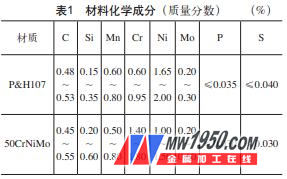In the printing process, due to the repeated contact between the water roller and the printing plate, after a period of time, the ink and other impurities will be detached from the printing plate on the one hand, and the velvet structure on the surface of the water roller will be damaged. In the process of transferring water, the surface velvet structure of the roller will be subject to the same damage; at the same time, the ink on the water roller will be transmitted to the water transfer roller through the hydrophobic roller. Therefore, the water roller fleece must be cleaned or replaced in time to restore and maintain water absorption and water transfer performance.
First, prepare cleaning materials and tools
(1) cleaning materials: gasoline, water (preferably a pool with a tap);
(2) Tool nylon brush and steel sheet.
Second, cleaning
Put both ends of the removed water roller on the bracket (or wooden pillow) of the water roller, pour the gasoline on the roller surface, and use the plate brush to brush evenly in one direction (the direction of the silk of the water roller velvet); After the ink is dissolved, it is flushed with water until the roller surface is free of dissolved ink. Finally, the excess moisture is scraped off with steel.
(a) Cleaning of waterfighting sticks and water roller
The more common water roller is chrome plated. In the printing process, the ink stain on the water roller is also transmitted to the hydrophobic roller and the roller roller, which reduces the water transfer. In addition, when the downtime is long, even if the fountain roller and the fountain roller are not contaminated by ink, an oxide film is formed on the surface, and the surface of the roller absorbs oil mist and other impurities in the air, so that they are Some hydrophilic properties have changed. Therefore, the bucket roller and the squeegee roller must be cleaned in a timely and regular manner so as to restore its hydrophilicity and uniform water transfer.
Cleaning materials: pumice powder, fountain solution, glue, and wipes.
(1) Draw the dampening stock solution, and then pumice powder, and then rub it back and forth on the surface of the hydrophobic roller and the fountain roller. When the ink and oxide film are removed, quickly wipe the surface with a wet cloth.
(2) Jog the machine, go to the remaining uncleaned parts, and wipe it according to the appeal method until all the two rollers are cleaned.
(3) Use a water cloth to pick up the glue and wipe the surface of the roller.
(b) Cleaning of the bucket
Bucket is generally made of copper alloy material. The long-term use of the bucket will inevitably fall into the dust and other debris. At the same time, the bucket roller will also bring paper powder, paper hair, and ink stains into the bucket. This will not only reduce the wetting property of the fountain solution. , And will directly affect the printing quality of printed products.
1, cleaning steps
(1) Prepare clean water and a cloth, a brush, and a plastic tube.
(2) Remove the fountain roller
(3) Pour the water into the bucket and use a brush to stir up the contents of the bottom of the bucket. Then use the conduit (the principle of the connected device) to suck out the turbid liquid in the water. While watering, brushing and guiding the water until the bucket is basically clean, the bucket is thoroughly cleaned with a cloth.
(4) Install the fountain roller
2, easy to produce problems and precautions
(1) When disassembling the water roller, care should be taken to ensure safety. The disassembled water roller should be placed on the water roller bracket if it is not to be used or installed immediately.
(2) When cleaning the water transfer roller and the water roller, the direction of brushing and scraping should be consistent with that of the water roller velvet.
(3) When cleaning the fountain roller and the hydrophobic roller, the amount of pumice powder should be as small as possible, and pumice powder should be avoided from falling into the surface of the bucket or the water roller.
(4) The water roller should be cleaned in time, otherwise it will reduce the water delivery performance of water delivery components, resulting in the production of dirty plates and other ills. The time for cleaning the water roller and the water bucket should be determined by the degree of fouling and the specific conditions. The general rule is:
1) When stopping for a long time or changing fine products, clean the water roller and the water bucket thoroughly before turning on the machine.
2) During the normal printing process, if the ink layer of the layout is thick, the water roller should be cleaned every day; if the layout graphic is thin or the general product is printed, the cleaning frequency can be appropriately reduced.
3) The ink stains on the water roller and the water roller should be cleaned in time, otherwise the local water supply of the printing plate will be insufficient, resulting in the failure of the dirty plate and the like. At the same time, the water roller may be easily stained with ink.
4) When replacing dark ink with light ink, be sure to clean or replace the water roller.
5) Before the new water roller is printed on the machine, apply a clean, wet cloth to wipe gently in the direction of the ridge of the water roller velvet to remove floating fluff on the surface of the water roller. Then, wipe the surface of the water roller with a suitable amount of water or dampening solution with a water wiper, so that the new water roller has a certain amount of water before the machine is on, so as to facilitate printing. The new water roll on the machine, you can make the machine idling for 10 ~ 20min, in order to make up for the water content of the water roller, and then shut down to wipe off the fluff on the water roller and the roller roller.
(3) Cleaning of ink fountains and ink paths
1, ink fountain cleaning:
(1) Prepare ink knives, containers for remaining ink, gasoline, and two wipes
(2) Scooping: Scoop out the ink in the ink fountain with a knife.
(3) Remove the ink fountain
(4) Cleaning the ink fountain roller: Use a cloth to draw the gasoline, scrub the ink on the ink fountain roller, and completely dissolve the ink. Then wipe the ink fountain cleanly with a clean cloth to make it look shiny.
(5) Cleaning ink fountain
(6) Return the ink fountain to its original working position. If it is not turned on for a long time, keep the ink fountain and the ink fountain roller separate.
2、Ink roller cleaning
(1) daily cleaning
In the printing process, when the color change is required, the printing is finished every day or in special cases, the ink roller is often required to be cleaned. (The cleaning process is omitted.) Therefore, cleaning the ink roller is one of the basic contents of daily operations.
(2) Special cleaning methods
In order to improve the life of the rubber roller and the quality of the product, the rubber roller must be removed periodically and cleaned by the root. This work is especially important when the rubber roller suffers from an ink failure such as oxidized conjunctiva or deinking.
3, roll oxidation conjunctiva
Refers to the ink in the connection material and driers and other substances penetrate the rubber roller for a long time, so that the surface of the roller seals the pores, thus forming a smooth oxide film. There are four ways to remove the oxidized conjunctiva of the roller:
1 Put the ink roller on the stand, use a clean cloth to take the appropriate amount of kerosene first, then pumice powder and wipe the surface of the roller firmly until the smooth surface of the roller is wiped off.
This method of scrubbing the ink roller is the most common method of periodically scrubbing the ink roller.
2 Scrub the ink roller with about 20% aqueous sodium hydroxide solution, then neutralize with weak acid, then rinse with water and wipe dry.
3 Wet the ink roller with about 10% aqueous sodium hydroxide solution, then wipe it with kerosene and pumice powder with a cloth. Finally, rinse with water and wipe dry.
4 Moisten the ink roller with kerosene and sand it with a finer emery cloth. When operating, the rotating ink roller should be even and the force should be light and consistent so as not to cause the roller to be uneven. This method is more thorough than the above method, but due to the difficulty in mastering, it also has great damage to the ink roller itself. Generally, it must be used with caution.
4, ink roller deinking
That is, due to the poor performance of ink emulsification and transfer of ink by the ink roller, a hydrophilic foundation is formed on the surface of the ink roller, and the ink roller does not absorb ink. This phenomenon is common when printing yellow or black, especially on domestic small offset presses.
Treatment of deinking of iron (or copper) squeegee roller: Wash the emulsified ink on the roller with gasoline first, then use kerosene and kerosene to clean the roller thoroughly, and then use a clean. The cotton gauze is taken with a copper plating solution (copper sulfate solution) to evenly wipe the surface of the ink roller. After the bright copper layer has formed on the surface of the ink roller, wipe the ink roller again with a piece of gasoline cloth.
De-inking of rubber rollers: If used and maintained improperly, the plastic (or nylon) roller and the rubber roller will still be de-inked. The deinking process of the plastic ink roll and the aging process of the rubber roll are basically the same. Wash the roll with gasoline first, then use a cloth to remove 5% sodium hydroxide solution and pumice powder, and wipe the ink roller vigorously. The surface is wiped off until the film layer with the smooth surface of the ink roller is wiped off. Finally, the ink roller is washed with gasoline.
However, the best way to prevent deinking is to prevent it, that is, to make appropriate adjustments from the process, such as: reducing the acidity of the fountain solution, reducing the amount of glue, reducing the layout of water and so on.
5, prone to problems and precautions:
(1) The ink fountain cannot be cleaned during the operation of the machine.
(2) If the ink fountain or the ink path is not cleaned properly, the following problems will occur:
1) When dark ink is replaced with light ink, light ink is seriously affected by dark ink. Therefore, when cleaning light ink, when the ink of the primary ink is cleaned, some light ink should be added to the ink fountain. Clean it with ink. If you still feel it is not washed, repeat it again.
2) The ink is dry on the ink fountain roller, the ink fountain blade and the ink roller, affecting the normal transmission of the ink, and even causing the failure of the rubber roller to deink and produce.
3) The rubber roller should be removed periodically for cleaning. The regular cleaning interval is one week.
4) When cleaning the rubber roller, it is strictly prohibited to use ketone and ester organic solvents for cleaning.





